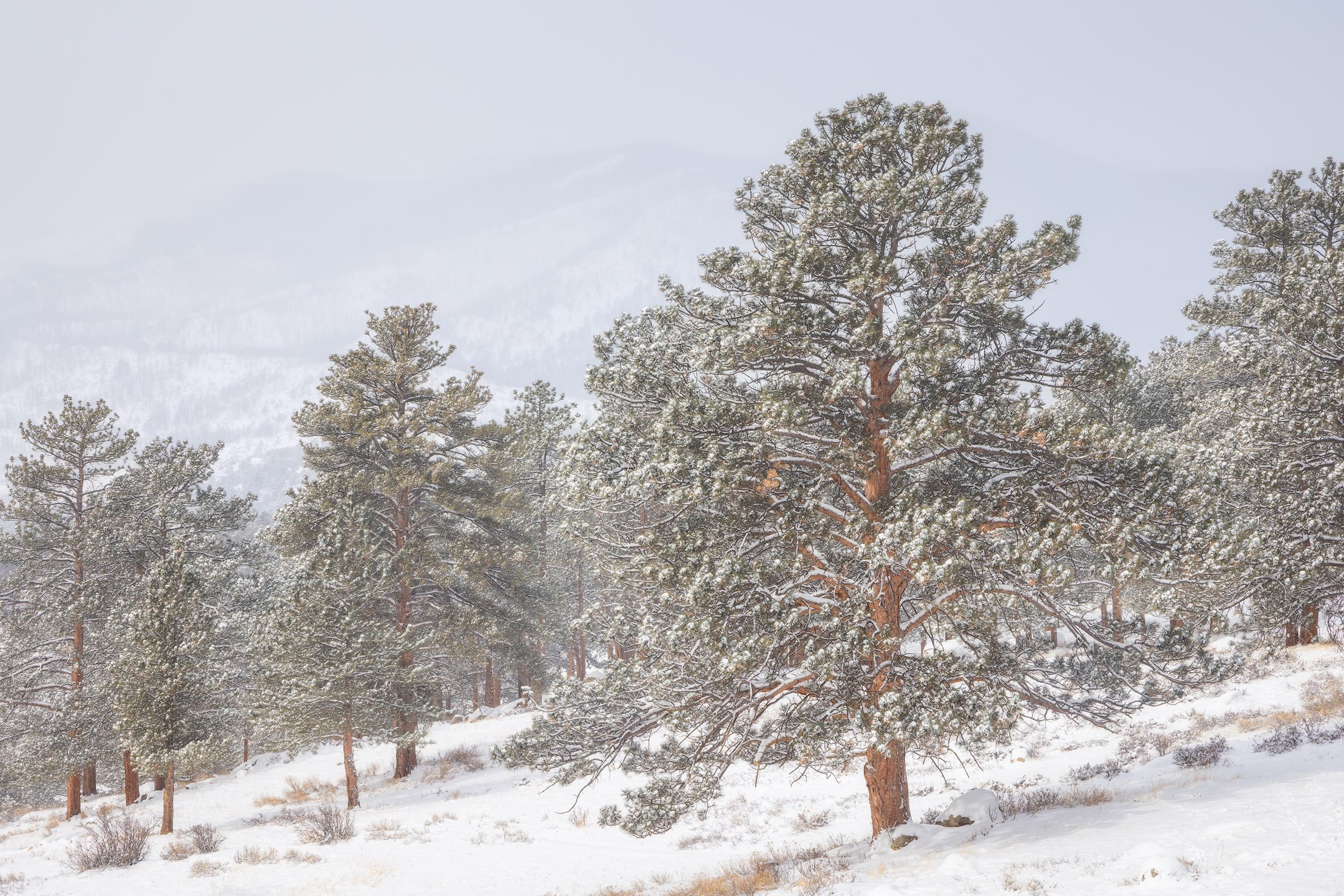Note: This is the introductory essay for my portfolio of photos from a recent trip to Rocky Mountain National Park. You can view the full portfolio as a free PDF ebook or as a web gallery.
I wrote the first draft of this essay on a hot, cloudless, and windy day in the Mojave Desert. With the intense winds kicking a thick brown cloud into the air, we baked inside our trailer since we did not want to open the windows for better ventilation and, maybe, a cooling breeze. Just a few days before, I had been in wintery Estes Park, Colorado, to attend a photography conference and then explore Rocky Mountain National Park (RMNP) with six photography friends. On our best day of photography in RMNP, the temperature hovered around 4°F, with winds as intense as I was now experiencing in the desert. Instead of stirring up copious amounts of dust and keeping me inside, the winds in RMNP instead whipped powdery snow into the air, creating a hazy veil of sparkles and the appearance of drifting fog during the best moments.
Putting aside the intermittent sound of the wind whisking through the trees, the feeling of being enveloped in such a quiet landscape is the thread I followed as I created the photos in this portfolio. With the bright whites and blues of the snow blanketing the mountains, meadows, and trees, and soft clouds easing the light toward gentleness, the landscape often looked like a sea of pleasant pastels spread out in front of me, even if the weather—the wind, the blowing snow, and the very cold temperatures—made the experience itself intense and quite unpleasant at times.
Read More











